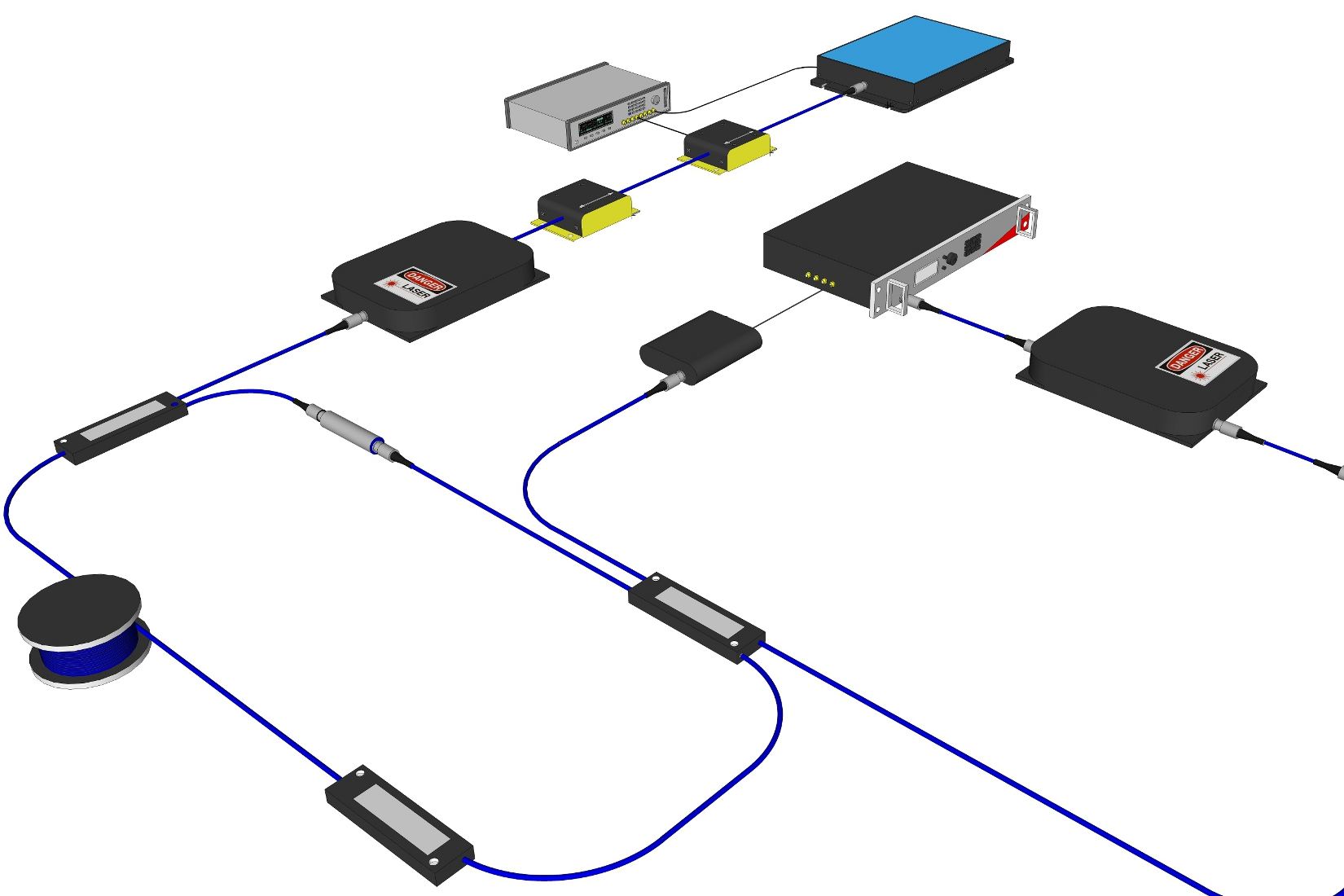Laser Lab
ResearchOverview
We conduct experimental, numerical, and theoretical research in the general fields of nonlinear optics and photonics. Our investigators have extensive research experience in discplines ranging from cold atoms and telecommunications to supercontinuum generation and mode-locked fibre lasers. Our most current research interests revolve around the physics and applications of coherently driven nonlinear resonators, such as macroscopic fibre ring resonators and whispering-gallery-mode microresonators. We seek to advance the understanding of the nonlinear optical phenomena that manifet themselves in such devices, and explore pathways to harness those phenomena for practical applications.

Microresonator frequency combs
Optical frequency combs are laser light sources whose spectrum is composed of numerous equidistant lines. They have had a transformative impact in the field of spectroscopy, enabling experimental measurements with astonishing precision. In 2007, a remarkable new method of frequency comb generation was demonstrated: low-power continuous wave laser light could spontaneously transform into a broadband frequency comb when coupled into an ultra-high-quality microresonator. Because of their unique characteristics, such “microresonator frequency combs” have potential to revolutionize a number of applications ranging from telecommunications to ranging, and they have accordingly attracted considerable research interest over the last decade.
In our reserch, we use numerical simulations and laboratory experiments to imporve our understanding of frequency comb generation in coherently driven, nonlinear resonators.

Widely tunable Kerr parametric oscillators
The ability to generate laser light that can be continuously tuned over wide regions of the electromagnetic spectrum is highly desireable for numerous applications. An attractive solution is to utilize nonlinear optical interactions to convert a monochromatic laser beam to other wavevelengths that can be widely tuned via small adjustments of the input wavelength. Because suitable nonlinear interactions can be observed at very low input power levels in carefully designed whispering-gallery-mode microresonators, such devices could enable the realization of low-cost and compact sources of widely-tunable laser light.
In our research, we investigate the generation of widely-tunable parametric sidebands in Kerr microresonators, with particular focus on realizing devices that can convert near-infrared laser light into tunable light in the mid-infrared spectral region.

Nonlinear dynamics in optical fibre ring resonators
Coherently driven optical fibre ring resonators display a wealth of universal dynamics associated with nonlinear systems driven out of equilibrium: pattern formation, dissipative solitons (known as temporal cavity solitons), switching waves, domain walls,… Moreover, fibre resonators are analogous to Kerr microresonators that have attracted attention in the context of optical frequency comb generation (see above). As a consequence, fibre resonators can be used as convenient testbeds to explore nonlinear phenomena whose direct study may not be straightforward in microresonators due to their small size.
In our research, we use optical fibre ring resonators to explore ubiquitous nonlinear dynamics and to gain insights on the physics that underpin Kerr microresonator frequency combs.
